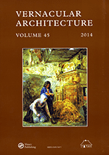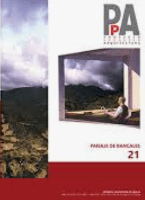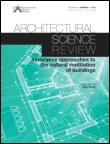
Cuaderno de Notas
metrics 2024
Bridging Cultures Through Art and Research
Introduction
Cuaderno de Notas is a dedicated journal that serves as a platform for scholarly discourse within the realm of arts and humanities, published by UNIV POLITECNICA MADRID, ESCUELA TEC SUP ARQUIT, DEPT COMPOSICION ARQUITECT. With an ISSN of 1138-1590 and an E-ISSN of 2386-8376, this open-access journal has been committed to free dissemination of knowledge since 2009. As of 2023, it holds a Q4 ranking in the arts and humanities category, reflecting its emerging presence in the academic community with a Scopus rank of #483/552 and a 12th percentile standing. Cuaderno de Notas aims to foster interdisciplinary research and creative expression, making it an essential resource for researchers, artists, and students seeking to engage with contemporary issues in the arts and humanities. Its base in Madrid, Spain, positions the journal at the cultural crossroad of European and global artistic innovation, ensuring its contributions are both timely and relevant.
Metrics 2024
 0.10
0.10 0.10
0.10 -
- 1
1Metrics History
Rank 2024
Scopus
JCI (Web Of Science)
Quartile History
Similar Journals

Nexus Network Journal
Innovating Connections in Visual Arts and Architecture.Nexus Network Journal, published by KIM WILLIAMS BOOKS, stands as a premier interdisciplinary platform across the realms of architecture, visual arts, and mathematics. With origins tracing back to 2004 and converging until 2024, this journal has established itself in the academic landscape through its rigorous peer-reviewed articles and impactful scholarship. Holding impressive Scopus rankings—where it is placed in the 88th percentile for Visual Arts and Performing Arts and the 61st percentile for Architecture—it emphasizes innovative connections between these disciplines. Although it operates outside the open access paradigm, it maintains a strong commitment to disseminating knowledge, reflecting its distinguished Q1 status in Architecture and Visual Arts and Performing Arts as of 2023. Researchers, professionals, and students alike will find Nexus Network Journal to be an essential resource for advancing their understanding and fostering dialogue in the intricate relationships between architectural theory, artistic practice, and mathematical thought.

Disegnare Idee Immagini-Ideas Images
Catalyzing Collaboration in Design and Artistic ThoughtDisegnare Idee Immagini-Ideas Images is a distinguished academic journal published by GANGEMI EDITORE SPA, specializing in the fields of Architecture, Visual Arts, and Performing Arts. With an ISSN of 1123-9247, this journal serves as a vital platform for the dissemination of innovative ideas and research findings in these dynamic disciplines. Over its publication span from 2009 to 2023, it has established itself in the academic community, achieving a respectable ranking in the third quartile for Architecture and second quartile for Visual Arts and Performing Arts as of 2023. Although not an Open Access journal, it offers rich content that appeals to researchers, professionals, and students alike, fostering collaboration and dialogue among scholars in Italy and beyond. The journal is an invaluable resource for those looking to explore the intersections of design and artistic expression.

Vernacular Architecture
Preserving Heritage, Inspiring InnovationVernacular Architecture, published by ROUTLEDGE JOURNALS, TAYLOR & FRANCIS LTD, is a pivotal scholarly journal dedicated to the study and preservation of traditional architectural practices. With its ISSN 0305-5477 and E-ISSN 1749-6292, this esteemed journal has been at the forefront of research from 1971 to 2023, providing a platform for interdisciplinary discourse among architects, historians, and conservationists. The journal holds noteworthy rankings, placing in the Q4 quartile for Architecture and making significant strides in related fields, including Conservation, History, and Visual Arts. As a vital resource with a current Scopus rank of #142 in Visual Arts and Performing Arts, it not only reflects the rich fabric of architectural heritage but also stimulates innovative approaches to contemporary building practices. Although not open access, it remains indispensable for those who wish to explore the nuances of vernacular forms and their cultural significance. Experience the convergence of scholarship and practice in Vernacular Architecture, a journal that champions the essence of place and identity in the built environment.

Bulletin KNOB
Connecting Scholars, Preserving HistoryBulletin KNOB, published by the KONINKLIJKE NEDERLANDSE OUDHEIDKUNDIGE BOND-KNOB, is a reputable Open Access journal that has been disseminating knowledge since 1899, with a continued commitment to making research accessible to all. Based in the Netherlands, this journal provides a platform for scholarly articles that span the fields of Conservation, History, and the Visual Arts and Performing Arts. With its 2023 Scopus rankings placing it in the top quartiles within its category, Bulletin KNOB is recognized for its significant contribution to the advancement of these disciplines. Researchers, professionals, and students alike are encouraged to engage with the journal's diverse content that bridges historical narratives with contemporary practices, fostering a deeper understanding of cultural heritage. The journal’s commitment to excellence is further reflected in its Q3 and Q4 quartile rankings, making it an essential resource for anyone dedicated to the study of the arts and humanities.

Festival dell Architettura Magazine
Innovating Spaces: Where Architecture Meets CultureFestival dell Architettura Magazine, published by FESTIVAL ARCHITETTURA EDIZIONI, is a distinctive Open Access journal dedicated to the realms of architecture, urban studies, and the visual and performing arts. Established with a vision to foster interdisciplinary dialogue, the journal has been a part of the academic landscape since 2013 and has converged its insightful contributions from 2018 to 2023. Despite being ranked in the lower quartiles in its respective categories—Q4 in Architecture and Urban Studies, and Q3 in Visual Arts and Performing Arts—this publication remains vital for emerging researchers and seasoned professionals alike, as it provides a platform for innovative ideas and practices from Italy and beyond. It serves as a key resource for those who wish to engage with contemporary architectural thought and cultural expressions, facilitating open access to research that highlights the intersections of space, society, and art.

ABE Journal
Connecting Scholars Through Artistic InquiryABE Journal, ISSN 2275-6639 (E-ISSN 2275-6639), is an esteemed open-access publication emerging from the collaborative efforts of INVISU-CNRS-INHA and the Institut National d'Histoire de l'Art located in Paris, France. Since its inception in 2012, the journal has facilitated unrestricted access to groundbreaking research in the fields of art history and visual studies, making significant contributions to interdisciplinary scholarship. With a commitment to disseminating high-quality research, ABE Journal plays a crucial role in fostering dialogue among scholars, practitioners, and students alike. Its diverse range of articles underscores the innovation and evolution within the art historical discourse, as it seeks to engage an international audience eager to explore contemporary methodologies and practices. The journal not only enhances accessibility to vital research but also aims to elevate academic standards within its field, making it a vital resource for those seeking to stay at the forefront of art history and visual culture.

ArcHistoR-Architecture History Restoration
Innovating Restoration Practices for Future GenerationsArcHistoR-Architecture History Restoration is an esteemed open-access journal published by UNIV MEDITERRANEA REGGIO CALABRIA since 2014, focused on the multifaceted domains of architecture, history, and visual arts. This journal serves as a vital platform for the dissemination of research findings, innovative methodologies, and critical discussions surrounding the restoration and history of architectural practices, appealing to a diverse audience of researchers, professionals, and students in these fields. With a commitment to scholarly excellence, ArcHistoR has positioned itself within the academic community, reflected in its ranking in the 2023 category quartiles, where it secured Q4 in Architecture and Q3 in both History and Visual Arts and Performing Arts. The journal facilitates global collaboration and knowledge sharing in its areas of expertise, further underscoring its relevance and significance. Based in Italy, effective communication and cooperation in the restoration community can flourish through the journal's purview. For those dedicated to expanding their understanding and contributing to the discourse on architectural history and restoration, ArcHistoR is an invaluable resource.

Zograf
Empowering global scholarship through open access.Zograf is a distinguished open-access journal published by the University of Belgrade's Institute of Art History, Faculty of Philosophy, dedicated to the fields of Archeology, History, and Visual Arts and Performing Arts. With an ISSN of 0350-1361 and an E-ISSN of 2406-0755, Zograf has made substantial contributions to research within its domain since transitioning to open access in 2002. Situated in Serbia, the journal has achieved notable recognition, ranking in the Q1 category for both History and Visual Arts and Performing Arts, and in the Q2 category for Archeology in the recent 2023 evaluations. This positioning underscores its significance and influence among peers, making it an invaluable resource for researchers, academics, and students alike. The journal's commitment to disseminating high-quality scholarship facilitates interdisciplinary dialogue and advances knowledge in the humanities, while its open-access model ensures that research is freely available to a global audience. Zograf's editorial board comprises leading scholars who are dedicated to promoting innovative research that inspires future generations of scholars.

Proyecto Progreso Arquitectura
Transforming ideas into impactful architectural narratives.Proyecto Progreso Arquitectura, an esteemed academic journal published by UNIV SEVILLA, EDITORIAL, is dedicated to advancing the fields of Architecture, Arts and Humanities, History, Urban Studies, and Visual Arts. With an Open Access model since 2010, this journal facilitates the dissemination of innovative research and critical discourse among a global audience, fostering collaboration and insight within the academic community. Operating from Seville, Spain, the journal has successfully carved a niche in the architectural and design studies landscape, currently positioned in the Q3 category in Architecture and Urban Studies, and Q2 in History and Visual Arts as of 2023, demonstrating its growing impact and reputation. With an ISSN of 2171-6897 and an E-ISSN of 2173-1616, it also ranks commendably in Scopus across various disciplines, offering readers an invaluable resource for scholarly articles that contribute to the vibrant dialogues in architecture and its intersection with societal developments. The journal's approach not only encourages academic rigor but also embraces the practical implications of research, making it an essential read for researchers, practitioners, and students alike.

Architectural Science Review
Shaping the future of architecture with insightful discourse.Architectural Science Review, published by Taylor & Francis Ltd, is a leading academic journal dedicated to the interdisciplinary study and exploration of architectural science and its implications on the built environment. With a rich history dating back to 1958 and an impressive convergence of research culminating in 2024, this journal has firmly established itself within the Q1 quartile of architecture, reflecting its significant influence and high impact, evidenced by its ranking at #20 out of 189 in the engineering architecture category on Scopus, placing it in the 89th percentile. The journal aims to contribute to the advancement of architectural knowledge by publishing rigorous research, innovative methodologies, and insightful discussions that resonate with architects, engineers, educators, and students alike. Although it does not currently offer open access options, the content within offers invaluable resources for those navigating the complexities of architectural discourse. The Architectural Science Review remains an essential platform for disseminating critical findings and fostering scholarly dialogue in an ever-evolving field.